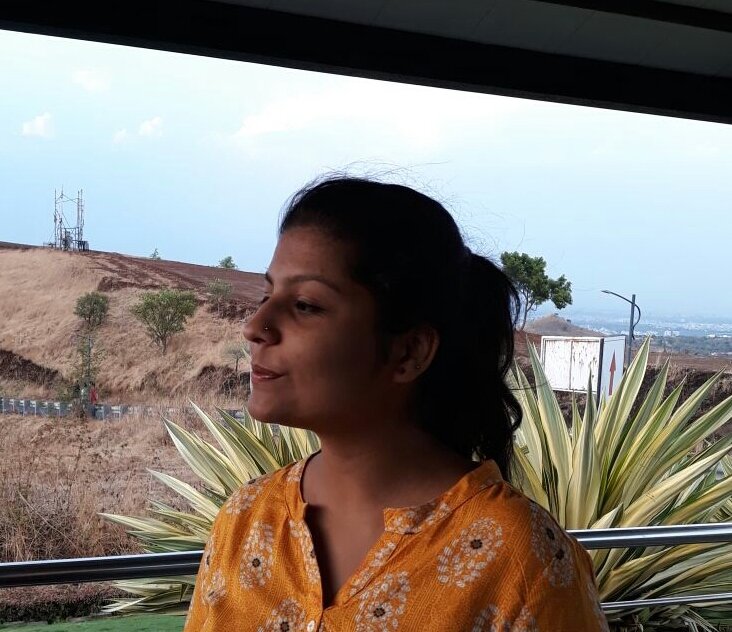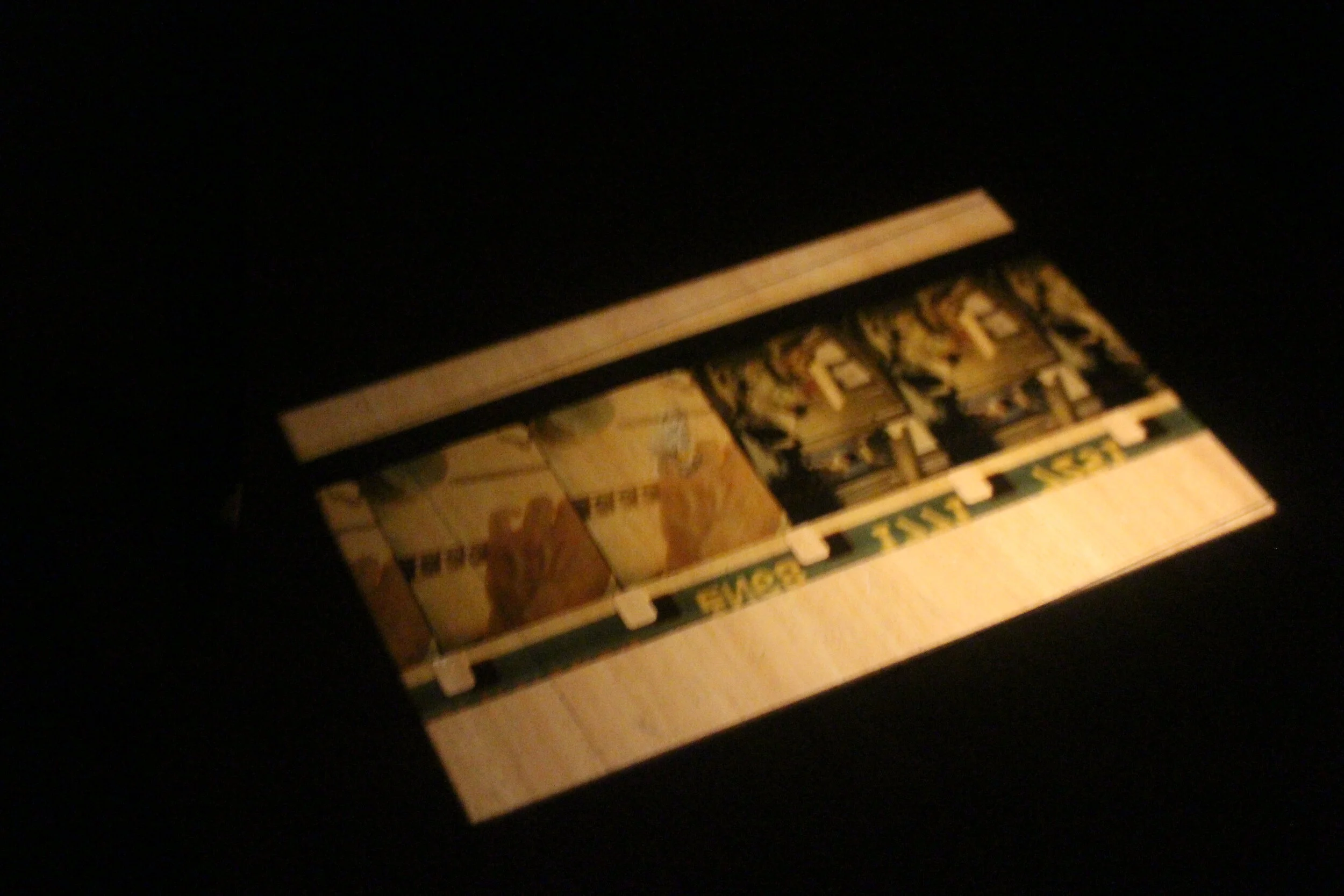Ishwari Bhalerao currently walks on, works with, and criticises the histories held with the British landscape, reiterating them through text, moving image, and analogue photo development processes. Through her work and texts, she is also questioning 'generational aspirations' in present day Britain and India, while thinking about sustenance and resistance, in the face of globalised capitalism.
She is working in a long term collaboration with artist Leonie Rousham. Together, they have walked the Grand Union Canal, to make the film-performance Towing the Line. They are co-founders of Kneed, learning ways of making sustainably, collectively and, with accountability.
Q&A with Ishwari Bhalerao
Can you describe your practice?
At the moment I am working in collaboration with Leonie who is also an artist. To make our work we use film, text, and performance to try and figure out the histories, booth personal and collective, that are held within certain landscapes. We have recently been thinking about colonial and gendered histories that are held within the materials of analogue film and photo processors, as well as text and language that we use to describe it.
Can you tell us about Kneed?
We call a part of our collaboration Kneed. Kneading as in kneading dough, as in process, labour, physicality, and time; and need as in “what do we need?” nourishment and sustenance or as an expression of obligation. By having conversation about Kneed we are trying to work out what kind of cultural archives we want to be and who we want to align with.
What role does walking have as part of your practice?
To make our work we also go on a lot of walks, the way we started making work was by going on a lot of walks. Recently I have written a text which is about some of our recent work:
Walking is just walking, until it becomes something more, so much more.
Until it becomes a walk along the Folkestone coast, the coast serving as a beginning and an ending, the beginning of a friendship on the ends of an Island which is about to haunt us for the rest of our lives.
The vast seas leading us to the strategically curated Grand Union Canal, where a walk digs deep, dredges objects of extractivism, found by the children of the shameful water itself, in a shallow, man-made canal bed.
Until it becomes a walk that pans a year, two years;
A walk to the borders of the Island again, where land meets sea, where river meets sea, water becomes water, Man becomes Explorer, no, we are not Man, we can’t be Man, how can we walk through land, where we are Witness, we are Witness to Man, we are Witness to the actions of the State, to the borders of the State, to the architectures of border control systematically embedded in the landscape by the State.
Until it becomes a walk along wheat fields, in Bedford, along the perimeter of Yarl’s Wood IRC, where the borders of the nation are manifested in the banality of the British countryside, the same countryside that has provided us the land to walk on, the land that has never made us fully believe its ours, this land of hostility.
Walking, being watched while walking, our bodies, in this University, where Jeremy Bentham asked for his body to be on display, this university that has given me the language of criticality, where care comes second, third, last, where caring is coping, to walk is to care.
Sara Ahmed says, In order to become orientated, you might suppose that we must first experience disorientation. When we are orientated, we might not even notice that we are orientated: we might not even think ‘‘to think’’ about this point. When we experience disorientation, we might notice orientation as something we do not have. To walk is to orientate, disorientate, reorientate.
Untitled (2020), Silver gelatin darkroom prints, made using 16mm cine film of restoration of ‘Barging through London’ shot in collaboration with Leo Rousham, made at home using chemicals including a DIY chemical using hing, vit C, and soda crystals.











